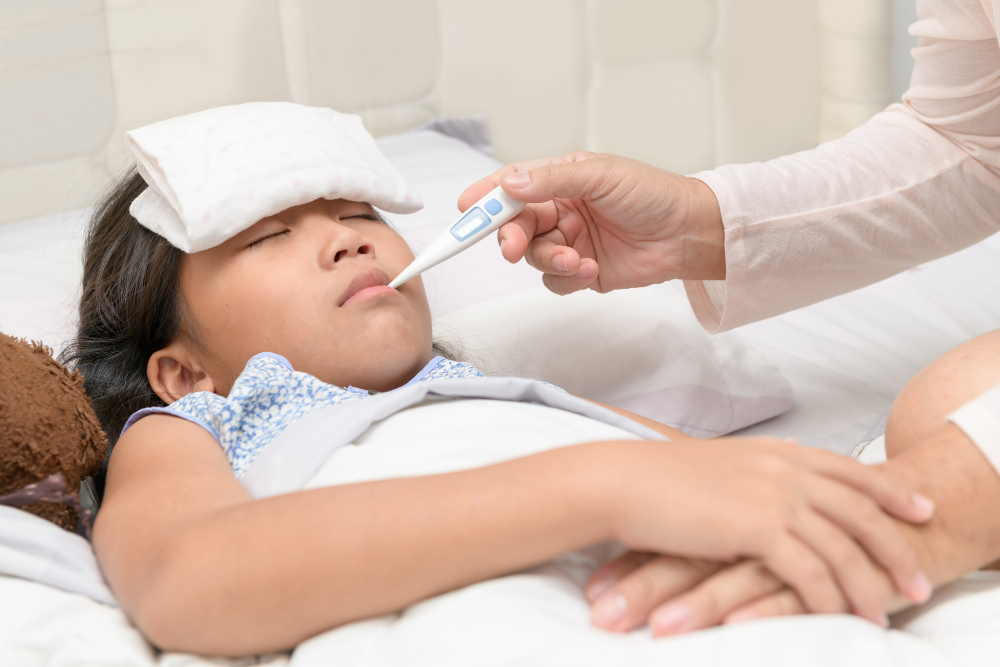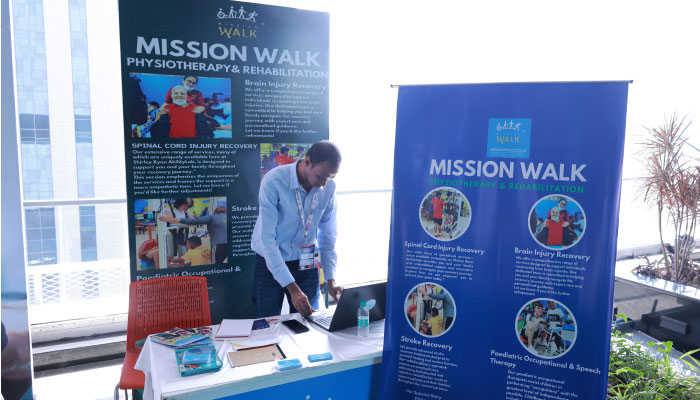Are you worried and frightened every time your child has a high-grade fever because of the associated seizure? Yes, it is indeed difficult and frightening to watch the seizure episode as the child’s whole body convulses, shakes, moans, or becomes unconscious.
A febrile seizure is a fit (convulsion) that occurs when a child has a fever above 100.4°F (38°C). However, the positive thing about the condition is that febrile seizures end without any treatment and do not cause any other health problems. Also, having febrile seizures does not mean that your child will have epilepsy or suffer from brain damage. All you need to do is stay calm and administer proper first aid during the seizure episode to prevent any untoward accidents or injuries to the child.
Understanding convulsions
A seizure is caused by an electrical disturbance in the brain, whereas a convulsion is an involuntary jerking and contraction. Seizures and convulsions are seen to occur in an individual when the normal connections between the cells in the brain do not function properly and the brain becomes irritated, resulting in an electrical storm. The potential for a person to have a seizure depends on the brain’s threshold to withstand excess electrical activity. In infants and children, high fevers can lower this threshold, resulting in febrile seizures.
High fever and seizures
Seizures or convulsions that occur in infants and children during episodes of fever are termed febrile seizures. Febrile seizures are routinely associated with viral infections and, in some children, after certain childhood immunizations such as the measles-mumps-rubella (MMR) vaccination. Children between the ages of 6 months and 5 years are more likely to experience them. A child is rarely seen to have a febrile seizure before the age of 6 months or after the age of 3 years. It is seen to happen during a febrile episode when the rectal temperature is more than 102 degrees F. Seizures usually occur on the first day of the child’s fever. During the episode of seizure, the child may lose consciousness and shake with movement of limbs on both sides of the body. Some children may become rigid and have twitches only in one portion (arm or leg) or one side of the body (right or left). The duration of a febrile seizure may vary from a few seconds in some children to about 15 minutes in others. The seizure stops on its own, while the fever persists until it is treated.
Simple febrile seizures are the more common type of febrile seizures; they involve the whole body, last for less than 15 minutes, and do not recur within 24 hours. Complex seizures last for more than 15 minutes, are confined to one part of the body, and recur more than once in 24 hours. Complex febrile seizures are seen to occur when there are serious underlying disease conditions, such as infections of the lining of the brain or spinal cord.
During the seizure
It is essential that parents and caregivers stay calm when the child is having a seizure. They should carefully observe the child to prevent him or her from getting injured. The child should never be restrained or held during the episode. The child should be placed on his or her side (to prevent choking) on a protected surface such as the floor or ground surface. Any objects found in the child’s mouth should be removed. They should not try to lower the child’s fever to stop a febrile seizure by giving fever medications during a seizure or placing the child in a cooling tub of water for the same reason. They should seek immediate medical attention if the child shows signs of difficulty breathing, there is a change in color on the child’s face due to a lack of oxygen, or the seizure lasts for more than 10 minutes.
After the seizure
If the child has experienced a seizure for the first time, he or she needs to be evaluated by the doctor as soon as possible, even if it lasts for only a few seconds. Also, after every seizure episode, the child should be examined by the doctor to find out the cause of the fever. The child would need urgent medical attention if he or she showed signs of a stiff neck, extreme lethargy, or excess vomiting after the seizure had stopped.
For the majority of children, the seizures are short and harmless. There is very little chance that the child will get injured by falling or choking on food or saliva if parents or caretakers ensure proper first aid measures during the seizure episode. There is also no evidence of seizures causing brain damage or affecting the intellectual capability of these children.
Risk of recurrence
A child is at risk of recurrent seizures if the first seizure occurs before the age of 15 months or if there is a family history of febrile seizures. The child is also at risk of having recurrent febrile seizures if there was a relatively low fever at the time of the first seizure, there was a brief duration between fever onset and the initial seizure, or there were multiple initial febrile seizures during the same episode.
Risk of epilepsy
In the long run, the risk of developing epilepsy is seen to be present in children who have prolonged febrile seizures lasting for over an hour, seizures affecting only one part of the body, seizures that recur within 24 hours, or associated conditions such as cerebral palsy, delayed development, or neurological abnormalities. A single seizure does not necessarily indicate that the child has epilepsy. Even repeated febrile seizures aren’t considered epilepsy because children outgrow the risk of having a seizure caused by fever.
Diagnosis
The doctor may perform blood and urine tests to find out the cause of the fever. The doctor may also perform tests to rule out other disease conditions as the cause of seizures. The doctor may perform a spinal tap, a procedure to remove a sample of the cerebrospinal fluid (the fluid that surrounds the spinal cord and brain). This test can reveal evidence of infection in the fluid that surrounds the brain and spinal cord, which could be responsible for the seizures. A child may need to be hospitalized for observation if he or she experiences prolonged seizures, has an associated serious infection, or if the source of the infection is not easily identifiable. Tests such as an electroencephalogram (EEG), which is a test that measures brain activity, may be necessary in children who suffer from complex febrile seizures.
Medications
Usually, there is no need for treatment with medication in children who are prone to febrile seizures. The doctor may prescribe the use of a drug called diazepam (orally or rectally) whenever the child has a fever. The drug is seen as beneficial as it lowers the risk of having another seizure. While the majority of the children tolerate the medicine well, some may experience drowsiness, hyperactivity, or a lack of coordination with the use of the drug. The use of fever-lowering drugs such as acetaminophen or ibuprofen has not been proven to reduce the risk of a seizure. Also, the use of anticonvulsant drugs such as phenobarbital or valproate is not recommended for the management of febrile seizures due to the risk of side effects with these drugs.
Stay calm, help your child
Watching your child experience a febrile seizure can be alarming, and the few minutes of the seizure episode may seem like an eternity to you. Thankfully, febrile seizures aren’t as dangerous as they appear. They are neither indicative of a serious underlying problem nor do they lead to epilepsy or any other health problems. Although you may feel helpless during a febrile seizure, you can make sure your child is safe by staying calm, offering him or her the right first aid measures, and comforting him or her after the seizure. Also, following up with a doctor’s visit is another good approach for handling a febrile seizure.



